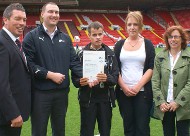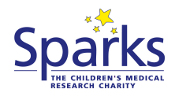Sheffield man becomes Rugby League's first blind coach
 A 25 year-old Sheffield man has become the first ever blind person to successfully complete a Rugby League Level 1 coaching course and become the sport's first qualified blind coach.
A 25 year-old Sheffield man has become the first ever blind person to successfully complete a Rugby League Level 1 coaching course and become the sport's first qualified blind coach.
Ben Noble, who has undergone his coaching qualification in partnership with Sheffield Eagles, whom he first joined in 2008, was formally presented with his RFL Level 1 coaching certificate at Sheffield's final game of the season against York City Knights last Sunday.
Mr Noble works with his sighted guide Stacy Darby, herself a qualified Level 1 coach, to deliver training sessions to the Eagles Academy side and he says he's delighted to have earned his Level 1 certificate and get his feet on the coaching ladder.
"It has been very hard work but in the end it all paid off and it was well worth it," said Noble. "I enjoyed every minute of it and I would like to say a big thank you to the Sheffield Eagles and the RFL for all the help and support that they have given me, without them I wouldn't be where I am today."
Stacy Darby, Mr Noble's support worker said; "I have never been as proud of anyone as what I am of Ben."
Sarah Williams, the RFL's Equality and Diversity Manager, said; "Having met Ben for the first time in 2008 I was absolutely delighted to be at the game on Sunday to watch Ben being presented with his certificate. He has achieved so much and is an inspiration to both disabled and non-disabled people alike."


 If you would like to take part in or know more about this research into mirror therapy, please contact us.
If you would like to take part in or know more about this research into mirror therapy, please contact us.